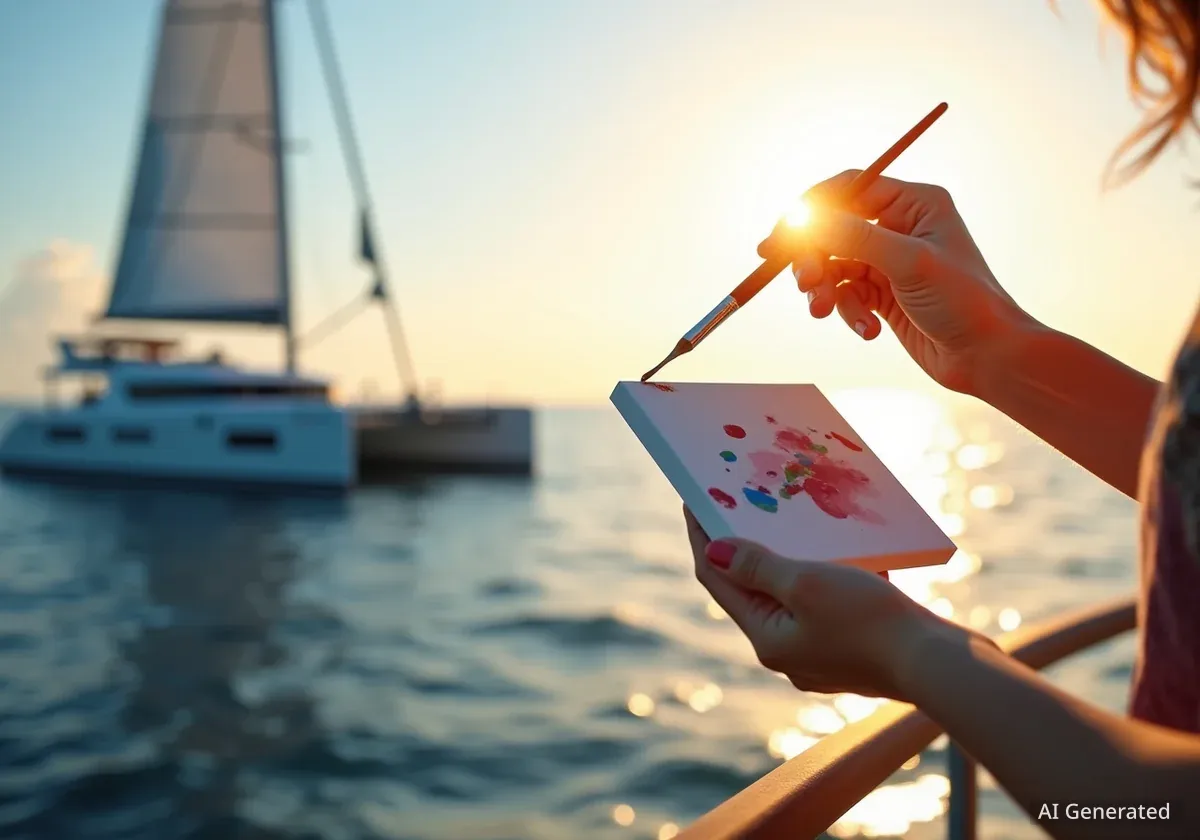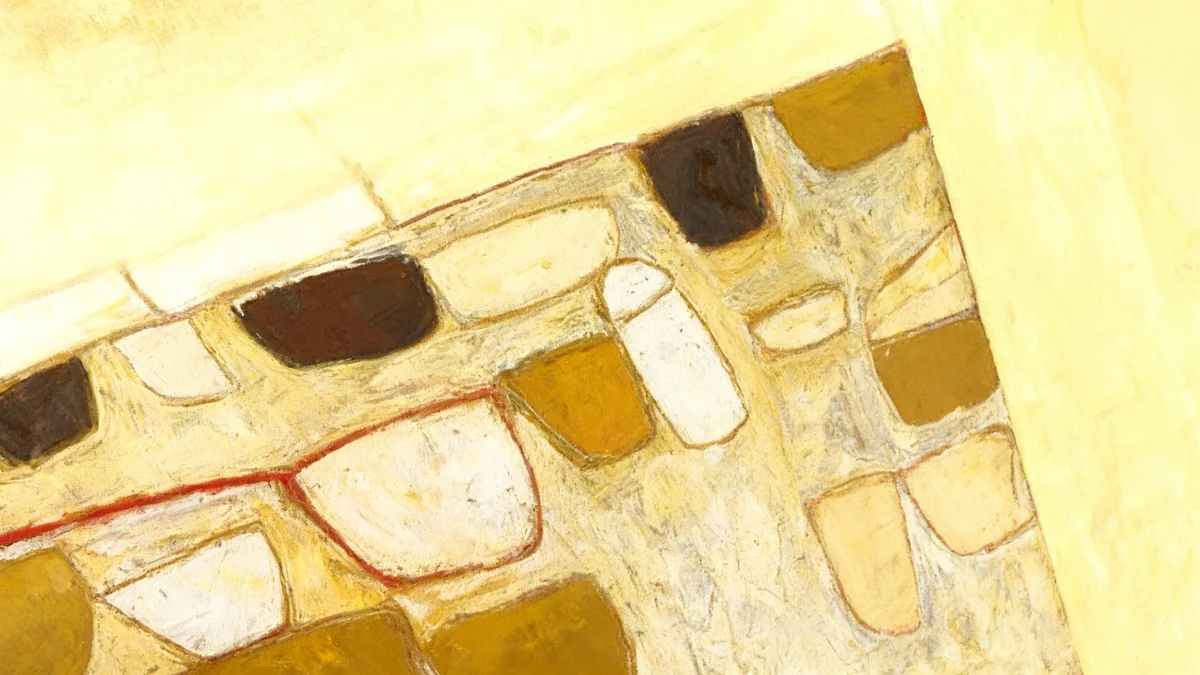A unique artistic expedition is underway as French artist Xavier Veilhan embarks on a transatlantic journey from France to Brazil. His vessel, the 55-foot catamaran We Explore, is not merely transportation but a floating art studio, complete with human-powered tools for creating art at sea. This innovative project aims to challenge traditional methods of art transportation and exhibition.
Key Takeaways
- Artist Xavier Veilhan is sailing from France to Brazil on a wind-powered catamaran.
- The boat houses a human-powered art studio, producing works during the voyage.
- The project critiques the energy consumption of international art transport.
- An exhibition titled "Do Vento" will showcase the art in São Paulo in November.
- Veilhan's son, Antoine, converted workshop tools to pedal power.
A Studio Afloat on the Atlantic
The We Explore, a 55-foot catamaran, set sail from France this month, embarking on a month-long voyage across the Atlantic Ocean. On board is the Transatlantic Studio, a fully functional atelier conceived by acclaimed French artist Xavier Veilhan. This studio is not reliant on conventional power sources; instead, it is driven by human effort, producing art as the boat moves towards its destination in Brazil.
Veilhan and his son, Antoine, a skilled carpenter, are central to this ambitious project. They have equipped the studio with tools like a bandsaw and a lathe, ingeniously converted to operate via pedal power. This hands-on, sustainable approach forms the core of their artistic endeavor during the journey.
"I want to further develop this initiative of a floating studio and wind-powered transportation for some of my upcoming exhibitions," Veilhan stated. "The goal is to create new imaginaries and offer an alternative to the pressures and frenetic pace of the art world: international fairs and exhibitions consume enormous amounts of energy and prioritize speed."
Voyage Details
- Vessel: We Explore, a 55-foot catamaran
- Origin: France
- Destination: Brazil
- Duration: Approximately one month
- Studio Name: Transatlantic Studio
Challenging Art World Conventions
Veilhan's project is a direct commentary on the environmental impact of the global art industry. He highlights how art is typically transported internationally, often relying on jet-fuel-burning airplanes. By utilizing a wind-powered boat and a human-powered workshop, he offers a tangible alternative that significantly reduces the carbon footprint associated with art logistics.
The artist aims to inspire a shift in perspective within the art community, encouraging more sustainable practices. This journey is not just about creating new art pieces but also about demonstrating a viable, eco-conscious method for their production and transport.
The Pedal-Powered Workshop
The heart of the Transatlantic Studio lies in its custom-built, human-powered tools. Antoine Veilhan, with his carpentry expertise, played a crucial role in converting standard workshop equipment. The pedal-powered bandsaw and lathe allow for continuous artistic production without drawing on fossil fuels.
This innovative setup requires active participation from those on board, turning the act of creation into a collaborative, physically engaging process. The energy expended by the crew directly contributes to the making of the artworks, forging a unique connection between human effort, sustainability, and artistic output.
Art and Sustainability
The art world is increasingly scrutinizing its environmental impact. From gallery operations to international exhibitions, the carbon footprint of art production, transportation, and display is a growing concern. Artists and institutions are exploring various strategies, including local sourcing, digital exhibitions, and sustainable logistics, to mitigate these effects. Veilhan's project stands as a prominent example of an artist directly addressing these issues through their creative process.
"Do Vento": An Exhibition in São Paulo
Assuming the We Explore arrives as scheduled, the artworks created during the transatlantic crossing will be showcased in an exhibition titled "Do Vento." This show is set to open at São Paulo's Nara Roesler Gallery on November 8th. The title, meaning "Of the Wind" in Portuguese, aptly reflects the project's reliance on wind power and its thematic focus on natural forces.
The exhibition will offer a unique opportunity to view art literally born from a sustainable journey. Each piece will carry the narrative of its creation, shaped by the rhythm of the ocean and the human effort behind its making.
"This project is an experiment, an attempt," Veilhan reflected, "which has value as a work of art in itself."
The multidisciplinary nature of the project extends beyond the visual arts. It encompasses elements of engineering, environmental advocacy, and performance art, making the entire journey a living, evolving artwork. The collaboration between father and son, artist and craftsman, further enriches the narrative of this remarkable endeavor.
Impact on Future Exhibitions
Veilhan hopes this initiative will pave the way for future wind-powered transportation of his art. He envisions a future where the art world prioritizes thoughtful, energy-conscious methods over speed and convenience. This project serves as a pilot, demonstrating the feasibility and artistic merit of such an approach.
The artist's commitment to developing new "imaginaries" suggests a broader vision for how art can engage with global challenges like climate change. By integrating environmental consciousness directly into his creative and logistical processes, Veilhan offers a powerful model for other artists and institutions to consider.
- Exhibition Title: "Do Vento" (Of the Wind)
- Location: Nara Roesler Gallery, São Paulo
- Opening Date: November 8th
- Artist: Xavier Veilhan
- Collaborator: Antoine Veilhan (carpenter)




